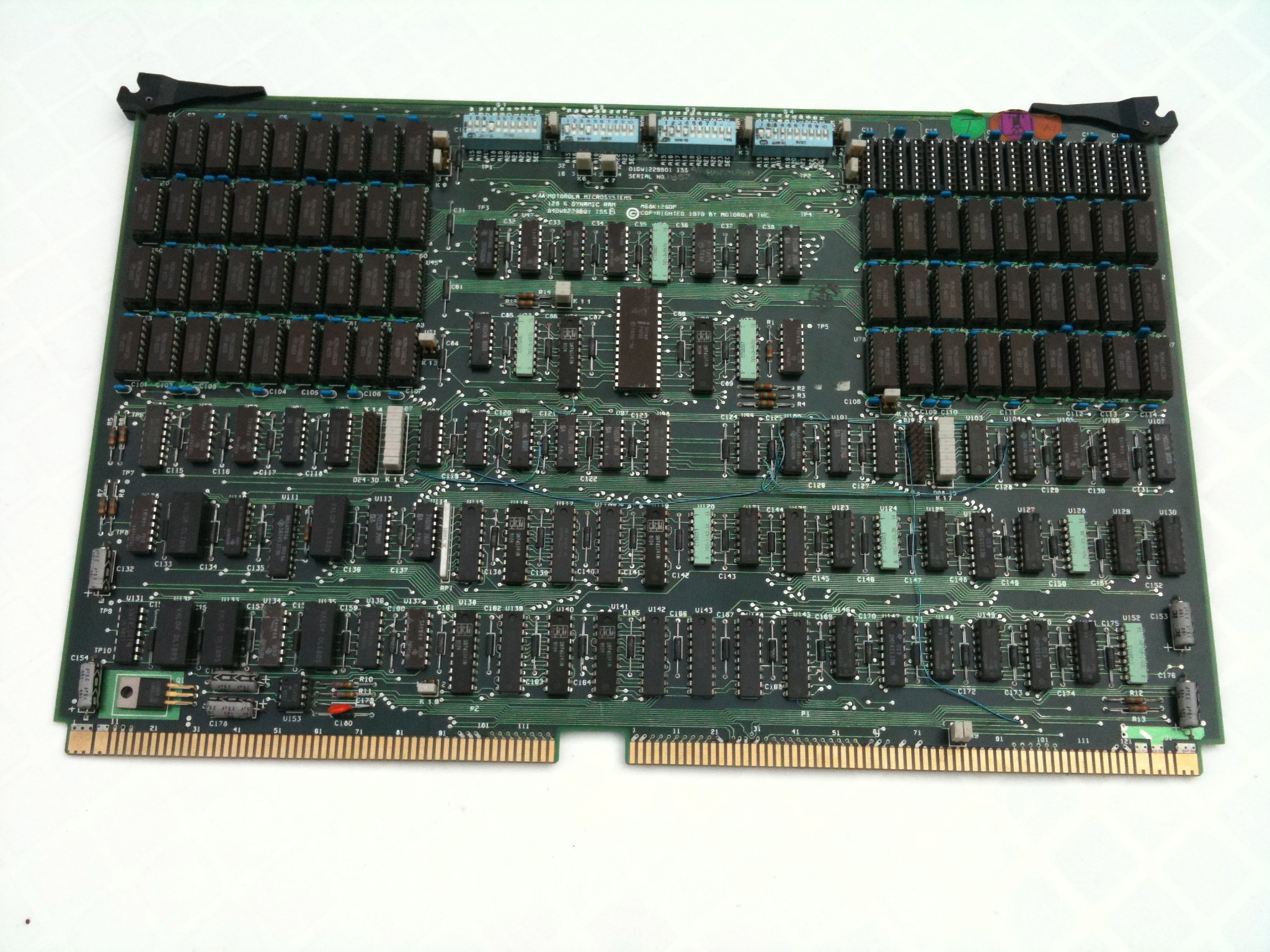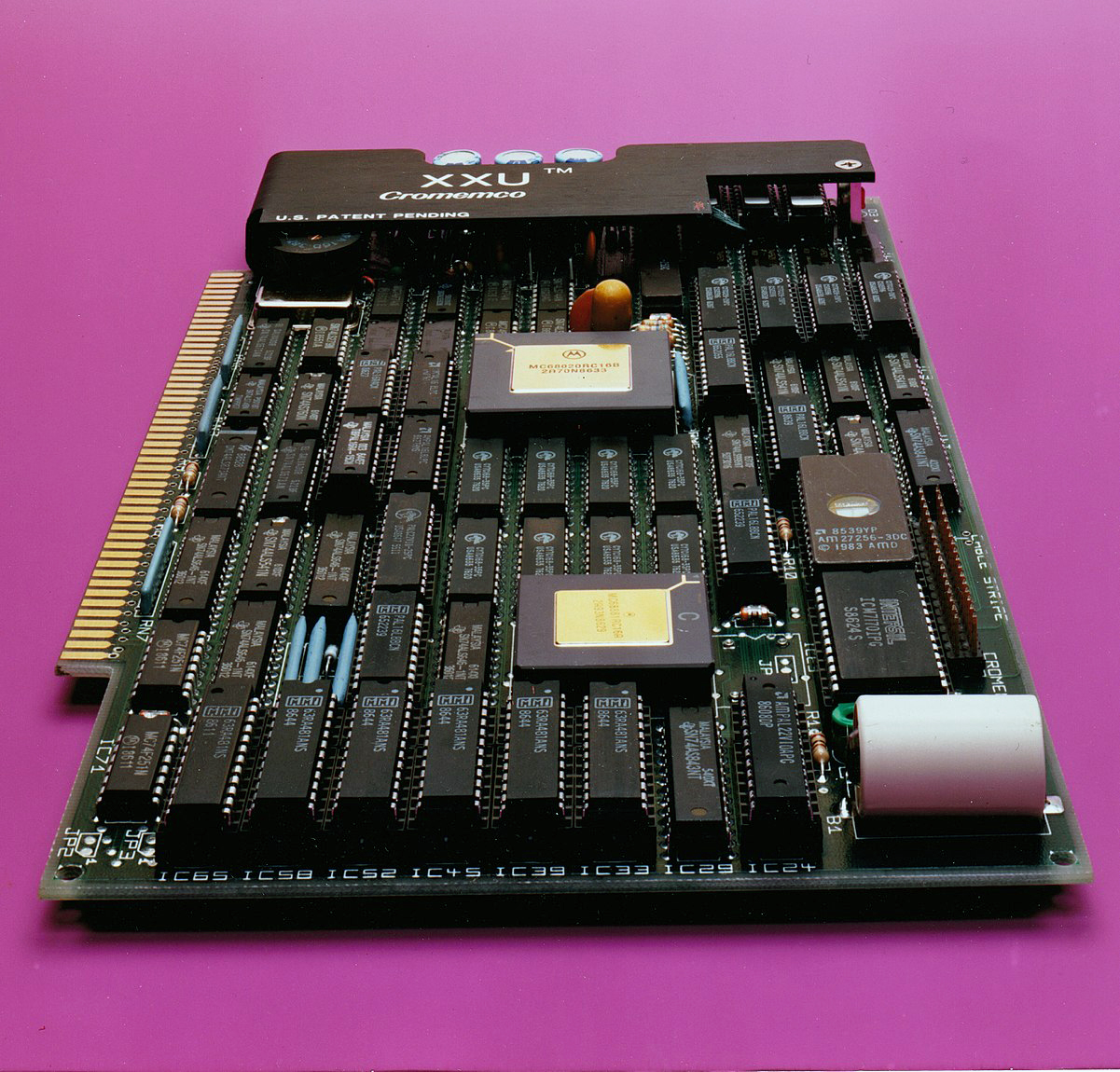|
Backplanes
A backplane (or "backplane system") is a group of electrical connectors in parallel with each other, so that each pin of each connector is linked to the same relative pin of all the other connectors, forming a computer bus. It is used as a backbone to connect several printed circuit boards together to make up a complete computer system. Backplanes commonly use a printed circuit board, but wire-wrapped backplanes have also been used in minicomputers and high-reliability applications. A backplane is generally differentiated from a motherboard by the lack of on-board processing and storage elements. A backplane uses plug-in cards for storage and processing. Usage Early microcomputer systems like the Altair 8800 used a backplane for the processor and expansion cards. Backplanes are normally used in preference to cables because of their greater reliability. In a cabled system, the cables need to be flexed every time that a card is added or removed from the system; this flexing ... [...More Info...] [...Related Items...] OR: [Wikipedia] [Google] [Baidu] |
Wire Wrap
Wire wrap is an electronic component assembly technique that was invented to wire telephone crossbar switches, and later adapted to construct electronic circuit boards. Electronic components mounted on an insulating board are interconnected by lengths of insulated wire run between their terminals, with the connections made by wrapping several turns of uninsulated sections of the wire around a component lead or a socket pin. Wires can be wrapped by hand or by machine, and can be hand-modified afterwards. It was popular for large-scale manufacturing in the 1960s and early 1970s, and continues today to be used for short runs and prototypes. The method eliminates the design and fabrication of a printed circuit board. Wire wrapping is unusual among other prototyping technologies since it allows for complex assemblies to be produced by automated equipment, but then easily repaired or modified by hand. Wire wrap construction can produce assemblies which are more reliable than printe ... [...More Info...] [...Related Items...] OR: [Wikipedia] [Google] [Baidu] |
VMEbus
VMEbus (Versa Module Europa or Versa Module Eurocard bus) is a computer bus standard, originally developed for the Motorola 68000 line of CPUs, but later widely used for many applications and standardized by the IEC as ANSI/IEEE 1014-1987. It is physically based on Eurocard sizes, mechanicals and connectors (DIN 41612), but uses its own signalling system, which Eurocard does not define. It was first developed in 1981 and continues to see widespread use today. History In 1979, during development of the Motorola 68000 CPU, one of their engineers, Jack Kister, decided to set about creating a standardized bus system for 68000-based systems. The Motorola team brainstormed for days to select the name VERSAbus. VERSAbus cards were large, , and used edge connectors. Only a few products adopted it, including the IBM System 9000 instrument controller and the Automatix robot and machine vision systems. Kister was later joined by John Black, who refined the specifications and creat ... [...More Info...] [...Related Items...] OR: [Wikipedia] [Google] [Baidu] |
S-100 Bus
The S-100 bus or Altair bus, IEEE 696-1983 ''(withdrawn)'', is an early computer bus designed in 1974 as a part of the Altair 8800. The bus was the first industry standard expansion bus for the microcomputer industry. computers, consisting of processor and peripheral cards, were produced by a number of manufacturers. The bus formed the basis for homebrew computers whose builders (e.g., the Homebrew Computer Club) implemented drivers for CP/M and MP/M. These microcomputers ran the gamut from hobbyist toy to small business workstation and were common in early home computers until the advent of the IBM PC. Architecture The bus is a passive backplane of 100-pin printed circuit board edge connectors wired in parallel. Circuit cards measuring 5 × 10-inches serving the functions of CPU, memory, or I/O interface plugged into these connectors. The bus signal definitions closely follow those of an 8080 microprocessor system, since the Intel 8080 microprocessor was the first ... [...More Info...] [...Related Items...] OR: [Wikipedia] [Google] [Baidu] |
SGPIO
Serial general purpose input/output (SGPIO) is a four-signal (or four-wire) bus used between a host bus adapter (HBA) and a backplane. Of the four signals, three are driven by the HBA and one by the backplane. Typically, the HBA is a storage controller located inside a server, desktop, rack or workstation computer that interfaces with hard disk drives or solid state drives to store and retrieve data. It is considered an extension of the general-purpose input/output (GPIO) concept. The SGPIO specification is maintained by the Small Form Factor Committee in the SFF-8485 standard. The International Blinking Pattern Interpretation indicates how SGPIO signals are interpreted into blinking light-emitting diodes (LEDs) on disk arrays and storage back-planes. History SGPIO was developed as an engineering collaboration between American Megatrends Inc, at the time makers of back-planes, and LSI-Logic in 2004. SGPIO was later published by the SFF committee as specificatioSFF-8485 Host ... [...More Info...] [...Related Items...] OR: [Wikipedia] [Google] [Baidu] |
Server (computing)
In computing, a server is a piece of computer hardware or software (computer program) that provides functionality for other programs or devices, called " clients". This architecture is called the client–server model. Servers can provide various functionalities, often called "services", such as sharing data or resources among multiple clients, or performing computation for a client. A single server can serve multiple clients, and a single client can use multiple servers. A client process may run on the same device or may connect over a network to a server on a different device. Typical servers are database servers, file servers, mail servers, print servers, web servers, game servers, and application servers. Client–server systems are usually most frequently implemented by (and often identified with) the request–response model: a client sends a request to the server, which performs some action and sends a response back to the client, typically with a result or acknowledg ... [...More Info...] [...Related Items...] OR: [Wikipedia] [Google] [Baidu] |
Disk Array
A disk array is a disk storage system which contains multiple disk drives. It is differentiated from a disk enclosure, in that an array has cache memory and advanced functionality, like RAID, deduplication, encryption and virtualization. Components of a disk array include: * Disk array controllers * Cache in form of both volatile random-access memory and non-volatile flash memory. * Disk enclosures for both magnetic rotational hard disk drives and electronic solid-state drives. * Power supplies Typically a disk array provides increased availability, resiliency, and maintainability by using additional redundant components (controllers, power supplies, fans, etc.), often up to the point where all single points of failure (SPOFs) are eliminated from the design. Additionally, disk array components are often hot-swappable. Traditionally disk arrays were divided into categories: * Network attached storage (NAS) arrays * Storage area network (SAN) arrays: ** Modular SAN arrays ** Mo ... [...More Info...] [...Related Items...] OR: [Wikipedia] [Google] [Baidu] |
Disk Enclosure
A disk enclosure is a specialized casing designed to hold and power disk drives while providing a mechanism to allow them to communicate to one or more separate computers. Drive enclosures provide power to the drives therein and convert the data sent across their native data bus into a format usable by an external connection on the computer to which it is connected. In some cases, the conversion is as trivial as carrying a signal between different connector types. In others, it is complicated enough to require a separate embedded system to retransmit data over connector and signal of a different standard. Factory-assembled external hard disk drives, external DVD-ROM drives, and others consist of a storage device in a disk enclosure. Benefits Key benefits to using external disk enclosures include: *Adding additional storage space and media types to small form factor and laptop computers, as well as sealed embedded systems such as digital video recorders and video game con ... [...More Info...] [...Related Items...] OR: [Wikipedia] [Google] [Baidu] |
Disk Array Controller
A disk array controller is a device that manages the physical disk drives and presents them to the computer as logical units. It almost always implements hardware RAID, thus it is sometimes referred to as RAID controller. It also often provides additional disk cache. ''Disk array controller'' is often improperly shortened to ''disk controller''. The two should not be confused as they provide very different functionality. Front-end and back-end side A disk array controller provides front-end interfaces and back-end interfaces. * Back-end interface communicates with controlled disks. Hence protocol is usually ATA (a.k.a. PATA), SATA, SCSI, FC or SAS. * Front-end interface communicates with a computer's host adapter (HBA, Host Bus Adapter) and uses: ** one of ATA, SATA, SCSI, FC; these are popular protocols used by disks, so by using one of them a controller may transparently emulate a disk for a computer ** somewhat less popular protocol dedicated for a specific solution: FICO ... [...More Info...] [...Related Items...] OR: [Wikipedia] [Google] [Baidu] |
Line Card
A line card or digital line card is a modular electronic circuit designed to fit on a separate printed circuit board (PCB) and interface with a telecommunications access network. A line card typically interfaces the twisted pair cable of a plain old telephone service (POTS) local loop to the public switched telephone network (PSTN). Telephone line cards perform multiple tasks, such as analog-to-digital and digital-to-analog conversion of voice, off-hook detection, ring supervision, line integrity tests, and other BORSCHT functions. In some telephone exchange designs, the line cards generate ringing current and decode DTMF signals. The line card in a subscriber loop carrier is called a subscriber line interface card (SLIC). A line card can terminate a line supporting voice POTS service, ISDN service, DSL service, or proprietary ones. Some line cards are capable of terminating more than one type of service. Since an access network element is usually intended to interface many ... [...More Info...] [...Related Items...] OR: [Wikipedia] [Google] [Baidu] |
Blade Server
A blade server is a stripped-down server computer with a modular design optimized to minimize the use of physical space and energy. Blade servers have many components removed to save space, minimize power consumption and other considerations, while still having all the functional components to be considered a computer. Unlike a rack-mount server, a blade server fits inside a blade enclosure, which can hold multiple blade servers, providing services such as power, cooling, networking, various interconnects and management. Together, blades and the blade enclosure form a blade system, which may itself be rack-mounted. Different blade providers have differing principles regarding what to include in the blade itself, and in the blade system as a whole. In a ''standard'' server-rack configuration, one rack unit or 1U— wide and tall—defines the minimum possible size of any equipment. The principal benefit and justification of blade computing relates to lifting this restrict ... [...More Info...] [...Related Items...] OR: [Wikipedia] [Google] [Baidu] |
System Host Board
300px, PICMG 1.3 SHB and Backplane System Host Board is a term applied to a single-board computer meeting the PICMG 1.3 specification. PICMG 1.3 extended the previous PICMG specifications to continue support for PCI/PCI-X expansion cards as well as new support for PCI Express PCI Express (Peripheral Component Interconnect Express), officially abbreviated as PCIe or PCI-e, is a high-speed serial computer expansion bus standard, designed to replace the older PCI, PCI-X and AGP bus standards. It is the common .... References External links PICMG 1.3 SHB Express Resources {{Compu-hardware-stub Single-board computers ... [...More Info...] [...Related Items...] OR: [Wikipedia] [Google] [Baidu] |






